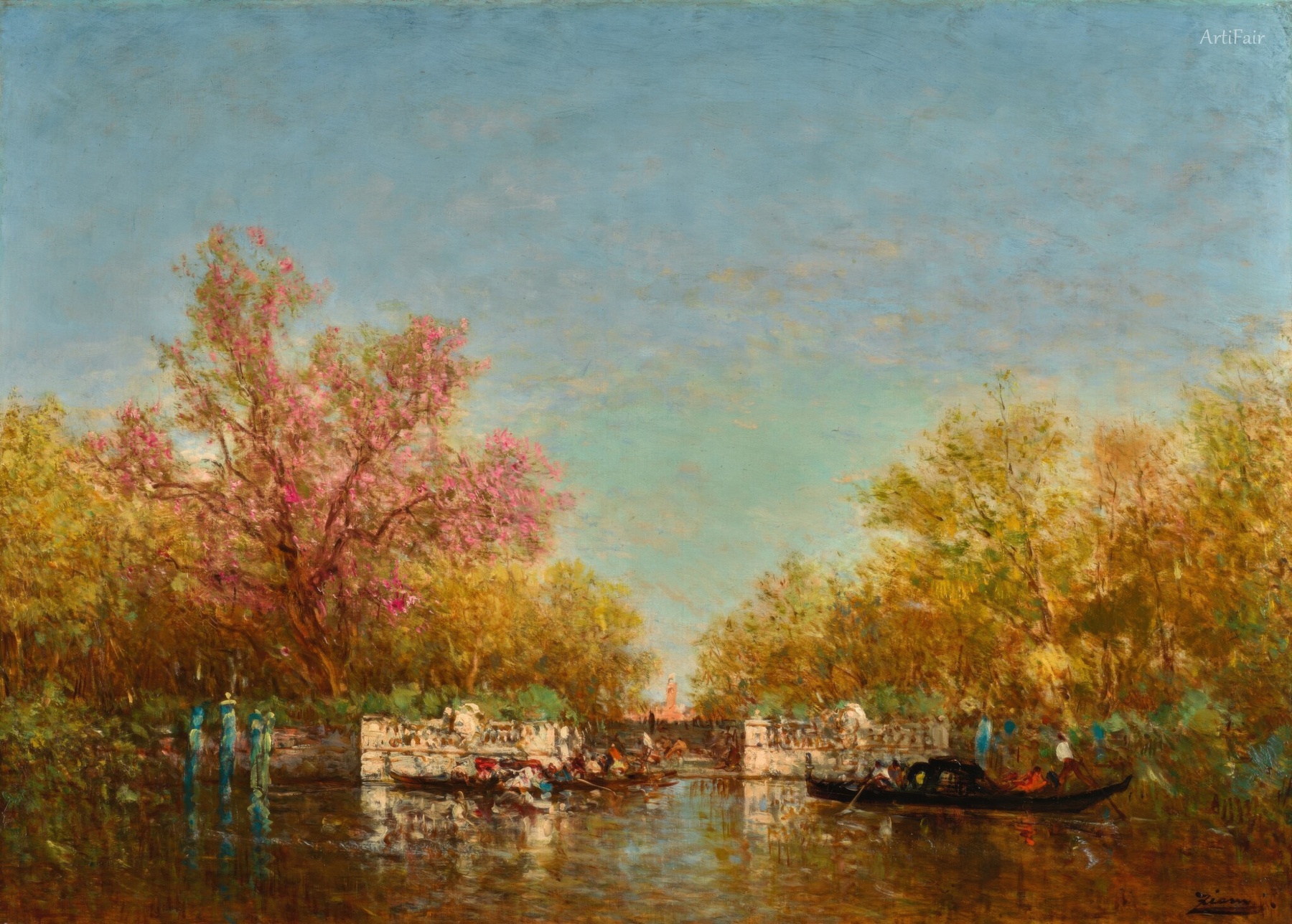

Félix Ziem
FR
219
Artworks
1821 - 1911
Lifespan
Artist Biography
Félix-François Georges Philibert Ziem (1821–1911) was a prominent French painter of the Barbizon School, celebrated for his luminous depictions of Venice and Constantinople, as well as his Orientalist works. Born in Beaune, Burgundy, to a French mother and a father of Croatian origin, Ziem initially pursued a career in architecture, studying at the École des Beaux-Arts in Dijon. He even worked as an architect for a period after relocating to Marseille in 1839. However, his true passion lay in painting, a calling that was profoundly ignited during a transformative trip to Italy in 1841. The captivating beauty of Venice, in particular, left an indelible mark on him, becoming a lifelong source of inspiration and a recurring subject in his vast oeuvre.
By 1849, Ziem had transitioned fully to a career as an artist, making a successful debut at the Paris Salon where his works were met with critical acclaim and public enthusiasm. This marked the beginning of a long and prosperous career, during which he became a regular exhibitor at the Salon, winning several medals and accolades. Ziem was an indefatigable traveler, venturing across Europe, the Middle East (including Egypt and the Ottoman Empire), and North Africa. These journeys provided him with a rich tapestry of scenes and cultures, which he translated into dreamy, light-filled landscapes and seascapes. His style, characterized by vibrant colors, atmospheric depth, and a masterful play of light, drew comparisons to the works of J.M.W. Turner and aligned him with the naturalistic tendencies of the Barbizon School painters, with whom he sometimes worked in the Forest of Fontainebleau.
Ziem was not only artistically gifted but also remarkably prolific and commercially astute. His oeuvre is estimated to comprise over 10,000 paintings. He maintained meticulous account books, detailing his sales and patrons, which reveal a keen business sense that contributed to his considerable financial success. He attracted a wide range of influential patrons, including aristocracy and the French state. While he traveled extensively, Ziem established primary residences and studios in Martigues, a small fishing port near Marseille, which he cherished for its Mediterranean light, and in Venice, to which he returned almost annually for decades. He also maintained a studio in Montmartre, Paris, and was known for his generosity, often assisting struggling younger artists.
His artistic technique was innovative; he was known for preparing his own pigments, particularly his vibrant blues, which were admired even by Vincent van Gogh. Ziem worked extensively from sketches and watercolors made on-site, but typically completed his oil paintings in the studio, allowing for a refined and somewhat idealized interpretation of the observed reality. His Venetian scenes, with their shimmering canals and iconic architecture bathed in golden light, and his depictions of bustling Ottoman ports with their exotic figures and grand mosques, became his signature. He skillfully captured the unique atmosphere of each location, from the tranquil lagoons of Venice to the vibrant energy of Constantinople.
Throughout his long career, Félix Ziem received numerous honors, including being made a Chevalier of the Legion of Honor in 1857 and an Officer in 1878. A significant testament to his stature came in 1910, a year before his death, when he became the first living artist to have his works enter the Louvre Museum, as part of the Chauchard bequest. In 1908, the Musée Ziem was inaugurated in Martigues, dedicated to his work, further cementing his legacy. Upon his death in Paris in 1911, Ziem left behind a rich artistic heritage. His paintings continue to be celebrated and are housed in prestigious museum collections worldwide, including the Hermitage Museum in St. Petersburg, the National Gallery of Art in Washington, D.C., and the Metropolitan Museum of Art in New York, securing his place as a significant figure in 19th-century European art.